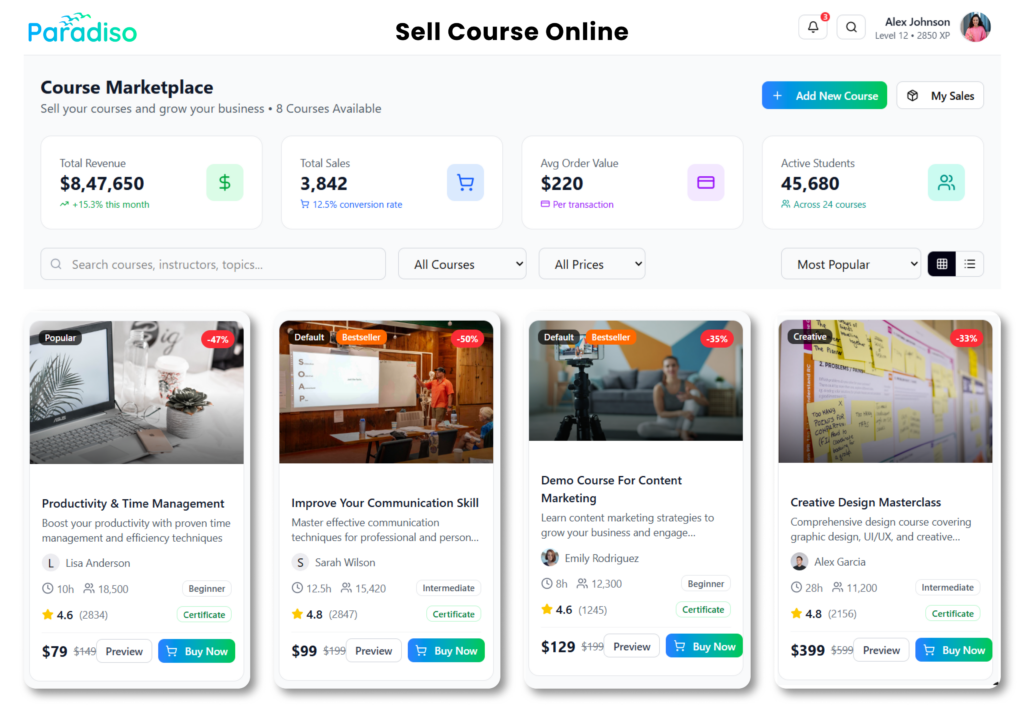Artificial Intelligence (AI) is increasingly being used in education to improve the learning experience for students and make educational systems more efficient. AI technologies can be applied in a number of ways, including personalized learning, virtual tutors, chatbots, intelligent recommendation systems, and intelligent assessment systems.
Personalized learning platforms use machine learning algorithms to assess a student’s knowledge and provide customized lessons and feedback to help them improve. Virtual tutors can provide students with additional practice and feedback, while chatbots can offer 24/7 access to information and support. Intelligent recommendation systems can recommend courses, books, and other learning resources based on a student’s interests and learning style, and intelligent assessment systems can provide instant feedback on student performance.
What is Artificial Intelligence in Education ?
AI in education refers to the use of artificial intelligence – computers that mimic human perception and decision making to complete a task – in the classroom and management of the class and course load. Just like introducing any other technology in education, the goal of AI in education is to improve student learning and offload administrative tasks that take up teacher and administrator time. Let’s dive into some of the current use cases of AI in education.
What are the Current Uses of AI in education?
There are several current uses of Artificial Intelligence (AI) in education, which are as follows:
- Personalized Learning: AI-powered learning platforms use machine learning algorithms to assess a student’s knowledge and provide customized lessons and feedback to help them improve. This allows for a more personalized learning experience that is tailored to each student’s individual needs and learning style.
- Virtual Tutors: AI-powered virtual tutors can help students with homework, provide extra practice, and offer instant feedback to help students learn at their own pace.
- Chatbots: AI-powered chatbots can provide students with 24/7 access to information and support, helping to improve engagement and accessibility for all students.
- Intelligent Recommendation Systems: These use machine learning algorithms to recommend courses, books, and other learning resources based on a student’s interests and learning style.
- Intelligent Assessment Systems: AI-powered assessment systems can provide instant feedback on student performance and help educators identify areas where students need extra support.
- Learning Analytics: AI can be used to analyze large amounts of educational data to identify patterns and trends, which can be used to improve educational outcomes and support evidence-based decision-making.
- Virtual Reality and Augmented Reality: AI can be used to create virtual and augmented reality experiences that provide students with immersive and interactive ways to learn about a variety of subjects.
How can AI Contribute to Education
The structure and quality of education should be demanding, competitive, and up to par with global standards. Knowledge can be integrated into a comprehensive system using simulation and augmented reality techniques due to artificial intelligence.
The automation of administrative tasks is one advantage of artificial intelligence. While administrative tasks are automated, teachers can concentrate on engaging kids more. Technology is a big assistance here by saving time and energy, from applying to schools to grading examinations.
The increased availability of high-quality education on intelligent content is another advantage of automation. In order to meet the needs of pupils in various locales, teachers can provide specialized study materials. Online lectures and video conferences are two examples of new forms. Students can also use artificial intelligence to narrow down and organize their job options.
3 Examples of How AI is Being Used in Education
Personalized Learning –
AI can provide personalized learning to students. Recommendations AI can account for large sets of data to deliver personalized learning that helps students achieve academic success. Recommendations can be based on student interest, level of expertise, speed of learning, and goals. By considering the student’s academic history as well as applying logic based on patterns of similar students, AI can provide curated content and courses to students.Universal Access –
Online education has provided incredible opportunities for students around the world from remote learning to hybrid learning. Opportunities for learners to take elite university courses without leaving their room. Limitations have also arisen around making these courses accessible to learners. AI has been able to help make these courses and learning online universal by providing real time transcription and translation, computer vision to identify imagery and visual objects, grading at scale to help with certification, and more.24/7 Tutoring –
Tutorbots are one way AI in education make learning engaging even when students don’t have anyone to speak to. AI like those used in chatbots can provide answers to students’ questions by analyzing their language using NLP or even scanning their work with vision AI to ensure their work as well as their answers are correct.Paradiso AI
Paradiso AI is invested in exploring how AI can be applied to video solutions such as using vision AI and recommendation AI to make content easily searchable and content-aware for search. Customers today utilize AI for video transcription and translation to automatically transcribe uploaded and recorded videos as well as to translate them for international audiences. REACH extends the “reach” of video content for international audiences, helps increase comprehension and engagement, makes content accessible for users of all abilities, and improves the search and discoverability of content.
Final Thoughts:
It sounds like the future, but really the future is now. Whether we realize it or not we use applications that are utilizing AI daily. It can be in the form of tools that check our grammar, entertainment that somehow recommends a song or a movie that we just love, and social applications that identify our friends automatically in our photos. At its best, AI in education will streamline teacher effectiveness – automating tasks such as reporting and grading, making elite education more available to all students of all backgrounds by making it affordable while still providing student feedback, and making education more accessible by using NLP and vision AI to help learners of all abilities succeed.













